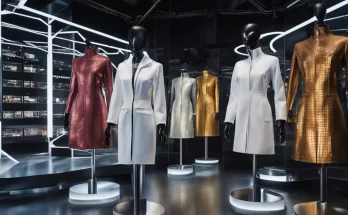Building your own custom gaming PC might seem complicated, but it’s actually quite straightforward. Selecting components carefully is essential, but there is more to keep in mind than just hardware.
As an example, monitor response rate can significantly impact gaming quality, while an effective motherboard can keep your system running smoothly.
1. Get the Right Case
Your case serves as the host for all of your PC components and must be visually appealing with sufficient space for cable management and sufficient fans for airflow.
Your gaming rig likely contains powerful components that generate heat, and these must be vented out properly in order to keep from overheating or failing completely. Otherwise, the system may overheat, slow down or fail completely.
Start by finding a case that fits the form factor of your motherboard and has cut-outs for all necessary wires. Some cases come equipped with rubber grommets or tie-off points on the motherboard tray for cable management purposes, while others remove 5.25-inch drive bays to improve airflow and avoid cluttering up their interior space with 5.25-inch drives bays – such as Lian Li 011 Dynamic XL models designed specifically for custom liquid loops – providing optimal airflow throughout and fitting all sorts of radiator brackets and distribution plates perfectly.
2. Make Sure You Have the Right Parts
Assembling your PC properly requires all the right parts. These include items like the graphics card for sharp visuals and RAM to accommodate all that graphical power. In addition, planning for future expansion by choosing a case, motherboard and power supply that support multiple graphics cards could prove invaluable – helping ensure smooth performance!
Remember to account for how much space will be dedicated to drives. If using M.2 drives, ensure the motherboard supports them. Finally, DIY PCs don’t provide system-wide support – so ensure components come with warranties to give yourself peace of mind if something goes wrong with the build.
3. Test Your Parts
Prior to installing anything, it is a smart idea to ensure all components work as expected. This is particularly important with regard to your motherboard and GPU as these will determine what kind of hardware and performance can be expected out of your rig as well as which storage drives can be installed.
Your CPU serves as the central brain of your computer, orchestrating tasks across all other components. Selecting an optimal processor will guarantee an amazing gaming experience.
A graphics processing unit (GPU) is responsible for translating raw data collected by your CPU into stunning visuals that you see on your screen. When choosing a GPU, be sure to opt for one with high graphical processing power and plenty of RAM.
4. Don’t Forget the Power Supply
Your power supply converts electrical current into the components of your PC, so selecting an efficient PSU that suits the wattage requirements for your build is of utmost importance. A low efficiency PSU may generate extra heat that damages other components over time.
Your motherboard acts as the central point between the PSU and other components in your system, dispensing power to each as necessary. Additionally, it distributes it based on their individual needs.
Processors are at the core of every gaming PC, processing all data transactions within your game and providing optimal performance. Selecting one that meets your gaming requirements can ensure optimal results.
5. Don’t Forget the Motherboard
The motherboard of your gaming PC should be your starting point when choosing components for it, dictating its overall size and physical layout as well as which other pieces of hardware will be compatible.
Considering a graphics upgrade in the future? Make sure your motherboard supports multiple GPUs; your CPU may require specific types of RAM DIMMs that can easily become confusing when trying to install. Many components feature built-in guides to assist with installation; look out for notches on gold fingers of RAM to line up its ridge with slot notches for optimal alignment of DIMMs with slots.




